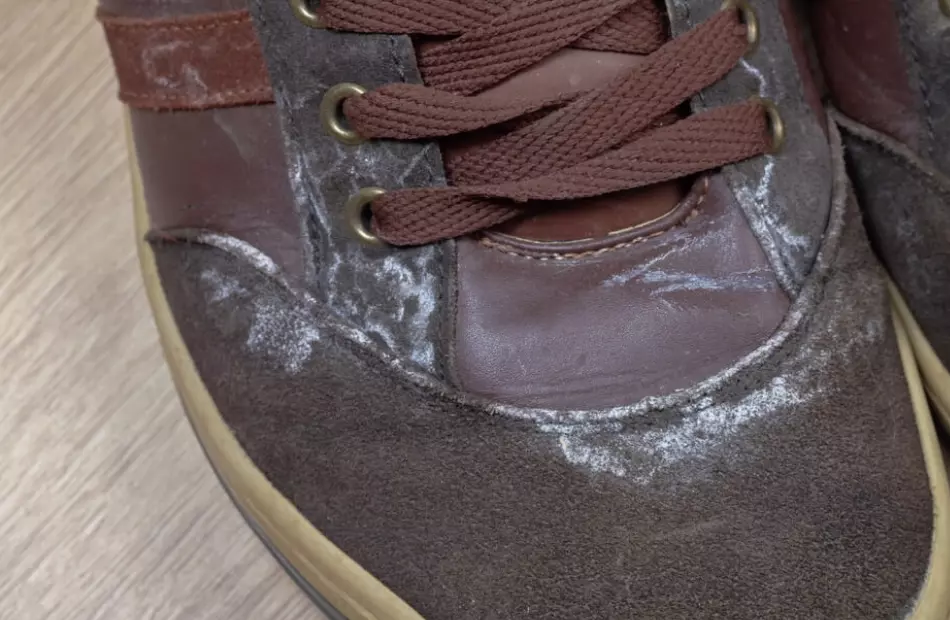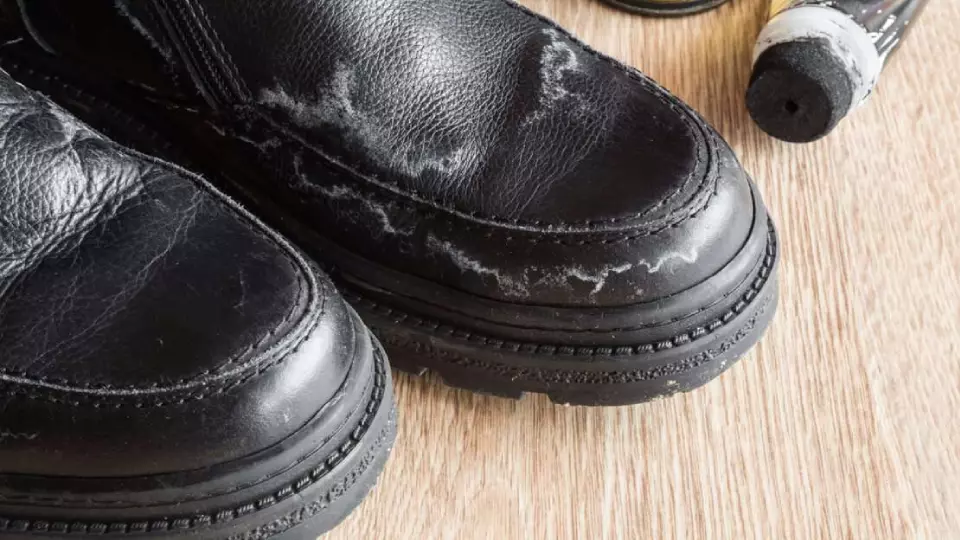How to Get Salt Stains Out of Leather Boots & Shoes Effectively
Wearing your leather boots to the beach or on roads salted for de-icing can expose them to high salt and moisture levels. This exposure may seem harmless at first but can cause your leather footwear to develop unattractive and obvious salt stains.
These salt stains are often whitish and can appear as discolored spots or lines. Many people do not act quickly and let the salt dry, which can result in tough-to-remove stains and even permanent damage that can affect the quality of your leather footwear.
This is why it is essential to act quickly. The only way to protect your leather shoes and boots from potential discoloration and further damage is to remove these stains immediately.
This guide will help you learn why leather gets damaged from salt, how to remove salt stains from your leather shoes and boots, the best practices for removing salt water stains, and the answers to some frequently asked questions.
Why Salt Can Harm Leather Shoes & Boots
Leather is a highly sensitive and porous material that can easily absorb water and other foreign substances. When salt gets into contact with leather (especially when mixed with water) it perpetrates the surface and dries out the natural oils in the leather.
These essential oils are the reason why well-maintained leather is so soft, supple, and shiny. When these oils are lost, they can cause your leather shoes to dry out, crack, and even develop bubble marks.

In the worst case, some leather shoes and boots can even begin to peel, which can lead to permanent and irreversible damage. However, salt stains are not only caused by the salt from the beach or roads; they can come from the leather itself.
We know this may sound counterintuitive, but let us go into a little more detail. Salt (particularly chromium salt) is an important and common component used in the tanning process of leather.
Therefore, when leather is soaked with water, the embedded salt from the tanning process rises to the surface and causes a visual effect on the leather. This is an often unknown reason why salt stains are created.
Removing Salt Stains from Leather Shoes & Boots
It is possible to prevent potential and even negate existing damage to your leather shoes and boots caused by overexposure to salt water. This is because salt is water-soluble and can be removed effectively with a leather cleaner or a homemade cleaning solution.
However, you must act quickly to remove existing salt stains or if your leather footwear has been exposed to salt water. If you leave salt stains uncleaned for too long, your leather shoes and boots may begin to peel and bubble.
To protect your expensive leather footwear, we recommend you follow the easy guide below. We have tested this method several times for its efficiency and have found it effective for most types of leather.
To begin the process, you will need:
- Vinegar
- Water
- Clean cloth
- Salt stain remover
- Leather cleaner (optional)
- Leather conditioner (optional)
Important Notice: Do not use these methods and cleaning solutions for suede or nubuck leather boots and shoes, as this will affect it’s appearance. Instead, use cleaners designed for softer leather.
1. Use or Create a Cleaning Solution
The first step to removing salt stains from your leather shoes is to make a vinegar and water cleaning solution or use an off-the-shelf cleaner that is suitable for leather.
Vinegar is an effective natural cleaning agent that can remove salt stains easily and effectively from leather. To prepare this, simply take 2 parts of water and mix it with 1 part of vinegar in a small bowl.
You can also use a dedicated leather cleaning product to remove the salt stains. However, read to product description carefully and ensure that it’s compatible with the type of leather you’re treating.
2. Clean the Salt Stains
In the second step of this process, you will need to use the vinegar and water solution or the leather cleaner on the stains. Dampen a soft and clean cloth with the solution and gently rub the salt stains with it.
This method will allow you to lift the salt from your leather footwear, but you may need to repeat the process for more persistent or larger stains (typically for the salt lines, as they are slightly harder to remove).
If the salt stains do not lift from the leather easily, try using a salt stain remover with leather-friendly ingredients for the job.
3. Condition Your Leather Shoes or Boots (Optional)
As highlighted earlier, the combination of water and salt can be detrimental to the durability and quality of your leather shoes and boots, which is why it is crucial for you to restore any essential oils in the leather that may have been dried out.
A leather conditioner is a perfect product for the job since it contains leather-friendly ingredients that can renew the appearance and suppleness of your footwear.
Use a dry and clean cloth to apply a thin layer of leather conditioner to your leather. Ensure to cover the entire surface of the boots or shoes evenly and repeat the process if required.
Allow your leather footwear to rest in a cool shaded environment after the conditioning process, and only use them once the leather conditioner has completely dried.
Best Practices To Treat Salt Stains
Although cleaning salt stains from leather boots is relatively straightforward, there are steps you can take to make the process even more effective and efficient. We recommend that you consider the following aspects.
- Act Fast – Time is of the essence when you are dealing with salt-stained leather boots. Salt is a corrosive substance that can dry out leather causing it to be brittle. Therefore, if you do not act quickly to remove any type of salt stains, your leather footwear may begin to peel or crack over time.
- Condition After – Since salt and water can displace nourishing oils in the leather, it is important for you to condition your leather shoes after the cleaning process to reintroduce them to the material. Conditioning provides suppleness to leather and protects it from exposure to salt.
- Avoid Contact with Salt – Avoiding contact with salt and excess moisture is the first step to preventing salt stains on your leather boots. When going to the beach or walking on salt-sprinkled roads, we recommend that you don’t wear your leather boots, unless you properly clean and condition them afterward.
Frequently Asked Questions (FAQs)
Here are the answers to some frequently asked questions about removing salt stains from leather footwear. Feel free to reach out to us, if you’d like to have your questions answered.
Can You Remove Salt Stains from Leather Boots Without Vinegar?
Yes, you can remove salt stains from leather boots without vinegar. If you are looking for an alternative cleaning method, you can try using an off-the-shelf leather cleaner instead of a vinegar and water solution.
A leather cleaner is formulated to remove all types of impurities from leather, including salt stains. They contain safe-to-use ingredients and ensure that your leather boots and shoes remain supple and clean.
How Do I Protect Leather Shoes & Boots from Salt Stains?
The best way to protect your leather boots from salt stains is to regularly use a leather conditioner. A leather conditioner can provide your leather footwear with missing essential oils and coat them with a protective layer.
How Do I Prevent Salt Stains on My Leather Shoes & Boots?
To prevent the formation of salt stains on your leather footwear, we recommend waterproofing them or avoiding using them near the beach or road salt. This will help your boots stay safe from salt stain damage and keep them supple and shiny for years to come.

About Matthew
Co-Founder, Editor-in-Chief & Writer At Leatherskill
I’m a leather enthusiast turned artisan. Apart from crafting leather products, I’m passionate about writing in-depth guides and reviews on all things leather!

